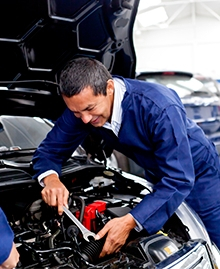Discover the Technology That Prevents Wear and Tear on Clutch Systems
Vibration is more than just a nuisance in the vehicle cabin. It can wear down and even damage parts. In this 30-minute free webinar, you will learn about the main clutch-related anti-vibration technologies, how they work, and why they are necessary.
Why Anti-Vibration Technology is Needed
New technologies come with trade-offs like increased noise and vibration. In order to preserve driving comfort and reduce unpleasant side effects, automakers are now emphasising NVH (noise, vibration, and harshness) during the design process. Discover these and other trends driving the need to reduce vehicle vibration.
What is Anti-Vibration Technology
Learn about the technologies that prevent vibration from transferring into the vehicle cabin. We’ll cover some common examples, such as engine mounts and their variations. Inventions like the dual mass flywheel have made clutch-related vibration a particular concern. The main focus of the webinar will be technology to reduce clutch-related vibration. You’ll discover the two main technologies for clutch-related vibration reduction: torsional vibration dampers and frequency modulators. We’ll explore each of these and their differences.
How Do Torsional Vibration Dampers Work
Torsional vibration is a common cause of clutch vibration, which can transfer vibrations from the flywheel to the clutch pedal. In our Webinar we’ll explain how torsional vibration dampers prevent the driver from feeling these vibrations and how much of a difference they actually make. You’ll see a cross-section image of its interior components and a diagram of the damper in a hydraulic clutch system. You’ll discover the different varieties of torsional vibration dampers and why the latest, most effective dampers are uncommon on new vehicles. We’ll also give advice for fitting the part during repairs.
How Do Frequency Modulators Work
Frequency Modulators are another common approach to reducing clutch-related vibration. Learn where it’s located and explain its role in the overall clutch system. In this webinar, We’ll show you a cross-section image of a frequency modulator to demonstrate what each component in the modulator does. You’ll discover the two types of frequency modulators and which frequencies each one can filter. We’ll use a graph to illustrate the real-world improvements of using frequency modulators.
The Consequences of Vibration
Learn how vibration dampers wear down over time and how to identify worn parts before it’s too late. We’ll explain the consequences of not replacing worn dampers and the damage vibration causes without fully functioning dampers. Discover the best practices for vibration dampers and key things to remember about vibration.
Valeo Clutch Parts
Valeo is a leader in clutches, providing complete clutches to OE manufacturers and the aftermarket. Valeo also offers a wide range of individual clutch components such as clutch master cylinders, dual mass flywheels, and clutch kits. If you need to replace a clutch or a specific part, visit the Tech@ssist part finder portal to search by part number, model, or VIN. If you need fitment advice or want to learn more about these complex parts, take a look at our free webinars in Tech@ssist.
What You Will Learn in Our Webinar
In this webinar, you will learn:
- What E10 is actually made of
- How to find out if your car is E10 compatible
- What to do if your car isn’t compatible with E10
You’ll also learn how E10 can corrode non-compatible vehicle engines and how to handle misfueling a non-compatible car with E10.
Afterwards, you will find downloadable materials about the new fuel called E10, including Frequently Asked Questions and a list of compatible manufacturers. There is also a link to the government website to search if your specific model of vehicle is compatible with E10.




